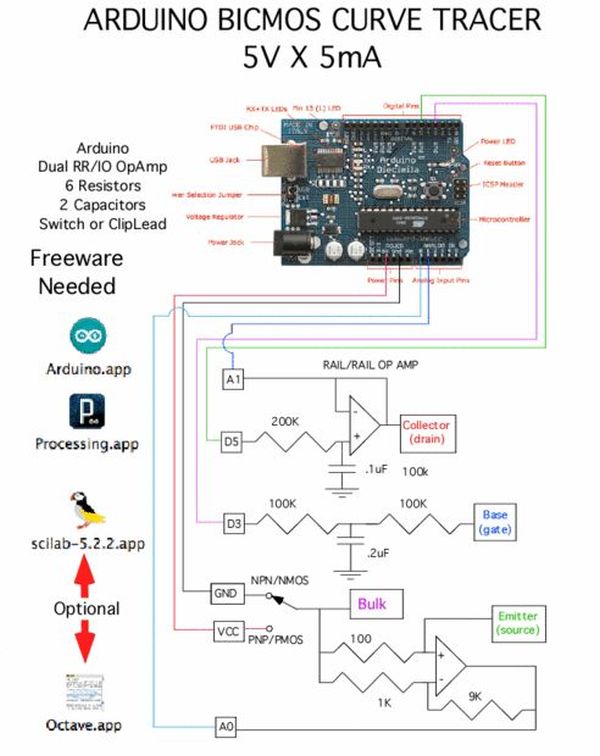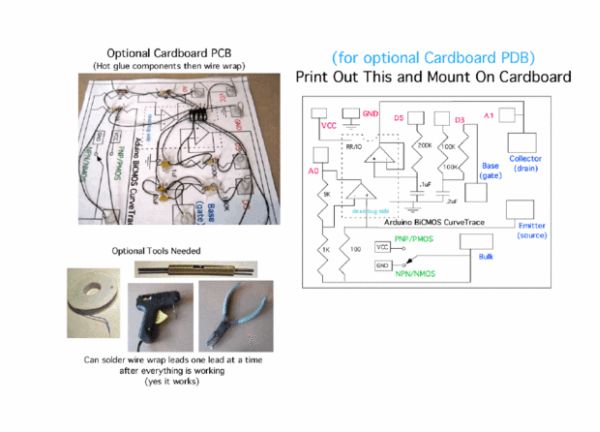Draw curve traces for both Bipolar and CMOS transistors using this hardware and free online software.
Step 1: Upload and Plot Curve for NPN, PNP, NMOS, and PMOS
The data for the transistor curves gets uploaded into any computer and can be plotted using SciLab or Octave
Step 2: Hook Up The Circuit
The circuit is simple enough for a solderless breadboard. But this type of circuit tends to want to be used more than once. An alternative is to print out the schematic shown on the right and glue to cardboard. Then hot glue all the components in place, and wire wrap up the circuit. After everything is working, soldering one side of the wire wrap of the components at a times seems to have no trouble with melting the hot glue. The techniques on how to do the wire wrap is described here.
http://www.instructables.com/id/A-Solderless-Printed-Circuit-Board/
Step 3: Now Copy and Paste in the Software
Code needs to be copied and paste into both the Arduino window and Processing widow. The code is simple text, and is included below. Additional code can be found at the follow web site.
http://www.idea2ic.com/BiCmosCurveTracer/Arduino%20BiCmos%20Curve%20Tracer.pdf
Step 4:
After compiling and uploading the Arduino code. Hitting the run button will bring up a graph window. Clip that window and type “s” to start the curve tracing. Typing “w” will write the data into your computer. Use the Show_Sketch_folder menu to find the data file. It will be labeled with the exact second the curve tracing started. This is a good time to rename that data file.
For more detail: Arduino BICMOS Curve Tracer


